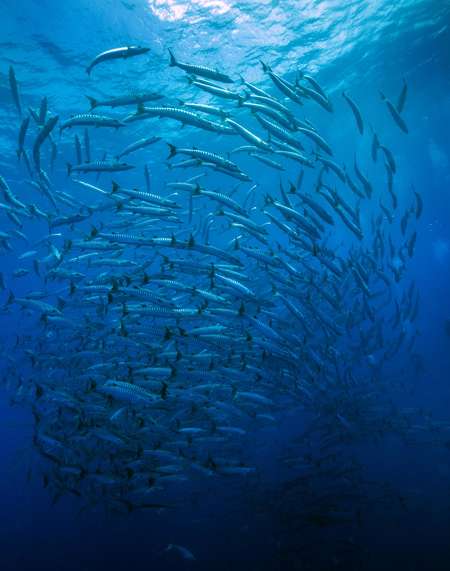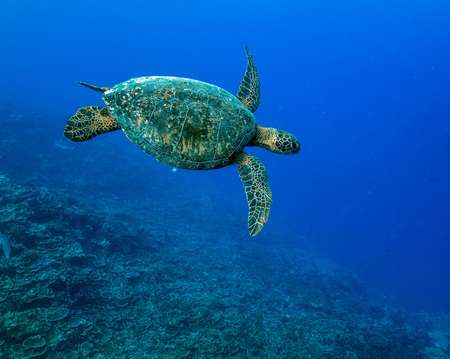Photographing underwater opens an entire realm of possibilities. And we as photographers have to use specific equipment to enter this world: scuba or snorkels, masks, fins. Underwater photography also brings a different set of rules to the image maker.
Here are some tips to help you make the most of your underwater adventures:
CHECK YOUR GEAR
Before I approach the water, I ALWAYS check out the gaskets and integrity of my camera and housing, making sure there are no grains of sand, small hairs, anything on the rubber O-rings that are found on any and all underwater (UW) photographic equipment. This simple and important step is critical for the UW photographer. A small tube of O-ring lubricant can be found at your local camera or dive shop. Keeping those O-rings clean and lightly lubricated is critical.
BE SET TO SHOOT
Here’s an obvious step that I’ve seen divers/snorkelers get caught on, not having batteries charged or fresh card in camera. You’ve got to be REALLY fast to open a housing, change a card, and close it before flooding! These are two simple steps that can be overlooked in the excitement an rush of getting ready for your dive or snorkel. Make it a habit to charge your batteries at the end of the day, as well as downloading your cards at the same time. Format that card when putting back in the camera, AFTER confirming you have all the images downloaded AND backed up.
REGULARLY CHECK FOR LEAKAGE
Whether using the TG-4 or an OM-D camera in my full housing, as soon as I get into the water I check for leaks. When entering the water my attention is on the camera/housing. With camera held up out of the water, I’ll put on my mask and get comfortable, then slowly move the camera below the surface. My task here is to watch for any bubbles coming out of my camera or housing. I’m not looking around at the fish or reef, instead I’m immediately checking my equipment for any chance of leakage. Salt water is highly destructive to camera gear, so this move is critical. If entering the water from a Zodiac raft or boat, I’ll ask someone to hold my camera as I make my entrance into the water. Whether snorkeling or diving, I do the same drill of checking the gear out for that tell-tale sign of problems, bubbles coming out of the camera/housing. If this occurs, time to get out and address that problem.
CONTROL YOUR SETTINGS
Once in, the fun starts. I have all my settings in mind, and usually set on the camera - which often includes setting the camera in “burst” mode, so you capture those fast moving residents of the sea. In addition to that, if not shooting with a flash, I’ll set the ISO a high enough to provide a shutter speed of 1/500, so I can stop that motion. In shallower waters my ISO is set high enough so I am shooting at an aperture that is in the f8-f11 range, providing enough depth of field (DoF) so my sharpness is deep.
If your camera struggles with AF underwater, you might consider putting it in manual focus. Then, set the focus at a good hyper focal distance: with my M.Zuiko ED 7-14mm PRO, I’ll set it at a manual focus distance of about 2 ½ feet. At this distance, and with that aperture in the range of f8 – f11, my DoF is from about a foot in front of the lens to infinity. When something fast happens in front of me - say the sea lions cavorting directly in front of the camera in the Galapagos - the camera will fire immediately when I press the shutter, and sharp focus is accomplished.
KNOW YOUR PORTS
There are a couple of different “ports” available on underwater housing: these are the glass front of the housing, with the lens immediately behind it. Choices are a “flat” or “domed” port. Flat ports are generally smaller, and are “uncorrected” for magnification that is created by the water. When shooting underwater with a flat port on the housing, or when shooting with most point and shoots, you actually “lose” the wide-angle capability of your lens due to water refraction, which “magnifies” the size of the image.
A domed port is corrected for that refractive error, and the lens length stays true. So, with the domed port, if using the M.7-14mm PRO, the lens provides that field of view of 7-14mm. A flat port will “magnify” the image by about 25%. Generally you don’t use a dome port for a macro, you’ll probably bump the front of the port into what you are photographing. Zoom lenses less than 35mm at their widest should be behind dome ports.
DISTANCE IS KEY
You can effectively photograph stills at about 1/5th the distance you can see when taking still photos. All that particulate matter moving about in the water will be “frozen” when shooting stills, occluding the subjects further away from you. So, in that water that has 50 feet of visibility, you can effectively photograph about 10 feet away before the subject starts to get blurry, or disappear in the snow of stuff in the water. This is another reason I like super wide lenses in a dome port underwater.
ALWAYS CONSIDER COLOR
Color balance can become strange the deeper you go. Remember, the greater the depth, the less red in the spectrum. The deeper you go, the more monochromatic the scene becomes as all the “warm” light will be filtered out. This has to be dealt with either by software, compensating for or adding warmth in deeper water photos, or by using flash to re-introduce that color. Above water, photographers love the “golden hour” of early morning or late afternoon. UW photography presents a dynamic where the most beautiful light will often be found at high noon on a cloudless day. The water will diffuse the light, which helps saturate colors and make them their richest.



